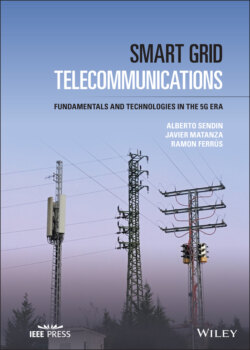Читать книгу Smart Grid Telecommunications - Ramon Ferrús - Страница 26
1.2.2.2.1 Regulatory Models
ОглавлениеRegulatory models for electric power systems are different in every country, although they often deal with two dimensions that classically determine how the model is implemented:
Which activities, of all the activities needed in the electric power system, need to be separated from the others? These activities are to be unbundled.
Which activities can be performed on a competitive basis? These activities can be deregulated or regulated in a different way.
These two dimensions create the different models. In one extreme, if none of the activities are unbundled or deregulated, we have the vertically integrated monopoly. In the other extreme, the activities (including Generation, supply – Transmission and Distribution – and energy trading) are said to be vertically disaggregated and are performed competitively.
In a vertically integrated monopoly, electric utilities are awarded a territory to supply electricity to. Thus, the utilities own and operate all the generation and network assets in those territories, and they plan and implement the expansion of production and network capacity under the guidelines and authorization of the regulatory authority, within a remuneration for the utility based on the incurred cost of service (including a rate of return for invested capital), an agreed price for end‐users within a satisfactory reliability level, and with the allowed environmental impact.
In an organization of the electric power systems where activities are vertically disaggregated, the competition is introduced through wholesale electricity markets, which are open to all generators (incumbents and new entrants) and to all consumer entities. In a wholesale electricity market, the electricity market price is fixed by competing forces and serves as a reference for medium‐ and long‐term contracts of different types. The agents trading on such markets are generators, different categories of supplier companies representing consumer interests, or acting as intermediaries. In this context, consumers are clients free to choose the supplier based on the available commercial propositions.
The beginning of the power sector (nineteenth and the early twentieth century) was driven by private initiative and competition, as electricity was not yet a pervasive must for the Society. Soon, in most countries, the situation was superseded by strong governmental intervention in the form of public ownership or utilities as regulated monopolies. States in most countries assumed a heavy planning and intervention, being the sole regulator. The situation has remained like this until the 1990s, when unbundling and regulation of network activities has happened, to separate them from the business part that can be performed in a competitive way.
Nevertheless, even in highly deregulated environments, Transmission and Distribution grids are subject to the existence of business‐relevant regulation. These networks, part of the whole system, are considered natural monopolies, as they do not have characteristics that allow the provision of their services under a market‐based regulatory regime. Consequently, these networks have enormous market power, and this is the reason why these grid‐associated activities must at least be wholly independent of other competitive businesses within the electric power system (i.e., generation and retailing – offering electricity to end‐users). Thus, their remuneration must be regulated, and they must be obliged to provide open and nondiscriminatory access to their facilities, allowing the rest of the competitive framework to happen. This highly regulated nature of Transmission and Distribution activity is extremely important, as networks are one of the most important elements in Smart Grids.
To understand the regulatory factors affecting this part of the system (the more directly connected to the evolution toward Smart Grids), we will focus on the monopolistic vertically integrated electric power system. Regulation must ensure that companies reach efficiency objectives, i.e., an optimal trade‐off between efficiency and service quality:
It needs to control the revenues from electricity sales so that the company can earn. Such revenues must be sufficient to enable the utility to make necessary investments while earning an adequate return on the capital invested and to cover its operating costs.
It needs to ensure that collected revenues are neither detrimental to consumer interests nor to the competitiveness of a country's industry, as electricity is an essential service.
There are two traditional approaches to solve this problem:
Cost‐of‐service (or rate‐of‐return) regulation. It allows utilities to recover all incurred costs, i.e., investment costs (a fair return on investment included) plus operation costs. The mechanism requires that utilities present their investment plans to run their business within the established framework and taking into account future growth needs and estimated future operation costs. Then, a regulatory commission may accept, reject, or propose to amend the proposals, until an agreement is reached.
Incentive‐based regulation. It is in fact an extension of the previous one, intending to improve it through a cost control (the idea is that both Society – through better prices – and the utility may benefit). Under the assumption that price paid do not necessarily mirror costs at any given time, explicit monetary incentives are established for the regulated companies allowing them to make a profit when they are able to lower costs. Prices are fixed for a certain period, and the utility may keep all or part of the cost reductions. Target revenues may also include incentives associated to other service characteristics, such as quality of service improvement and environmental aspects.
